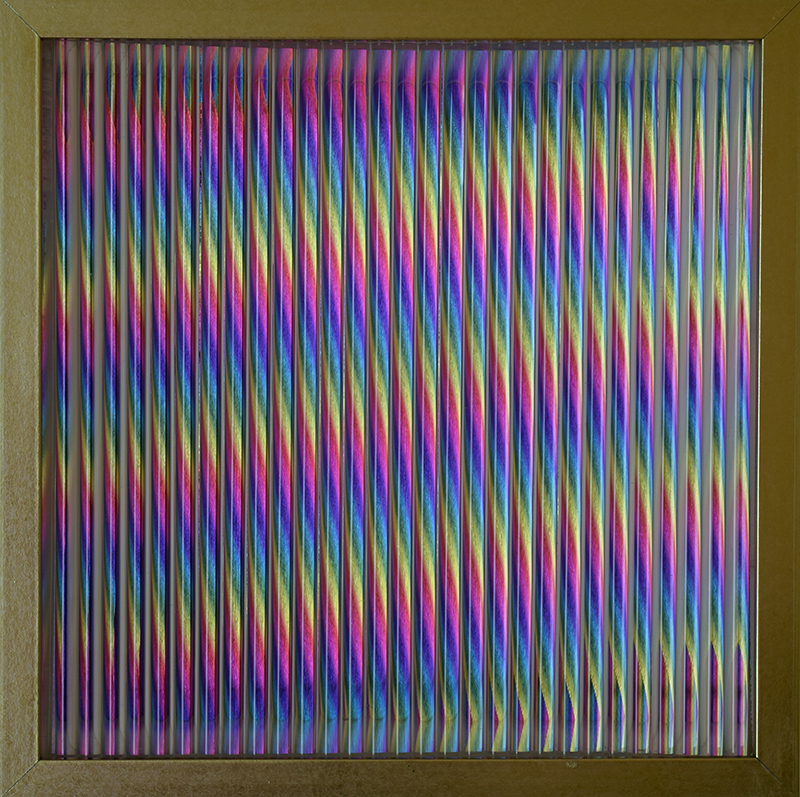Isabelle de Gouyon Matignon began her career by offering polygonal and geometric sculptures, reduced mostly to their only ridged structures, which can evoke children’s construction games. As laid bare, these sculptures may be, under the gaze of the observer, traversed from one side to the other; nothing is easier then to follow the ribs, to grasp the interior volumes, in perfect continuity with the external space that surrounds them, except in rare cases where one of their virtual faces being occupied by a metal plate, the vision of the whole is diminished.
These polygons have a very airy character, almost at the limit of immateriality. They give the impression of floating in the air, their seats always sketching a slight imbalance. The air character they possess and their assertive geometry contradict a peculiar irrational aspect that comes from the fact that, always consisting of two parts so intertwined, that the region of their encounter, on the first blow eye, holds a little mystery; and it is this mystery, a curious thing, that gives the work its true depth. This touch of irrationality, surrounded by shadows, could be a matter for questioning, because it is in the artist’s work as a construction principle, to which no work has yet been able to escape. Never put in default, this principle seems to refer to something unspeakable that the artist seeks to pass in the works, but without achieving it completely. One can think that here must play a very subtle symbolism, belonging to a form of modesty.
More simple, but of a great purity of line and a perfect finish, other sculptures realized, shortly after, with steel tubes of square section, cranked at right angle or obtuse vaguely evoke an Arabic writing with its contorted forms, labyrinthine. Weird signs with a flaming side and frozen in improbable positions. The seat of these sculptures is always marked by a slight imbalance, which must be another principle of construction in the artist. Whether painted in white or red, there is nothing here to indicate in the works the point of junction between the two parts, which still exist. It has disappeared, as much masked by the profusion of right angles as by the baroque complexity of their career in the works.




